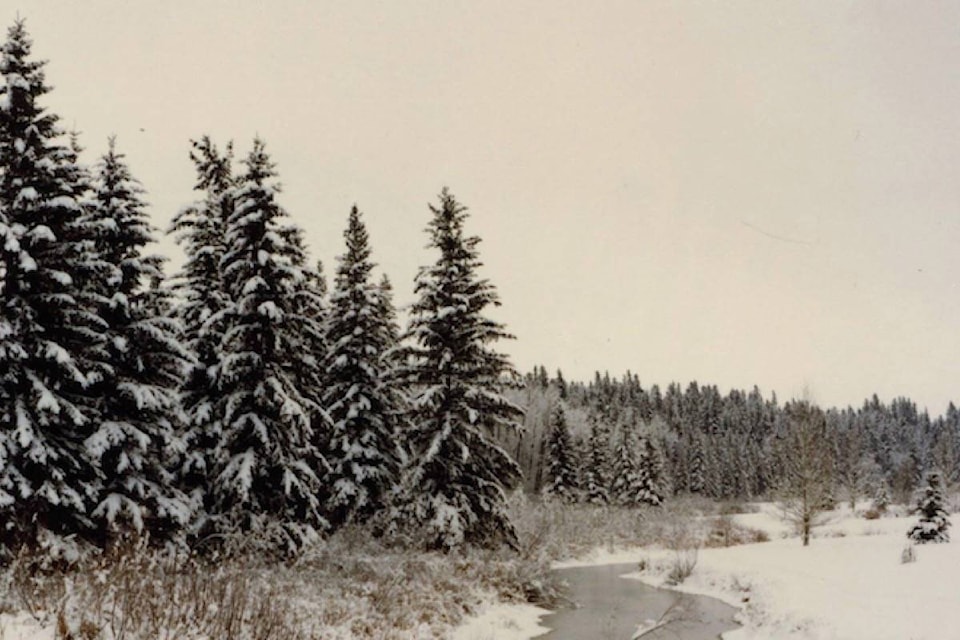Late spring blizzards are not uncommon in central Alberta.
Over the years, there have been several significant snowfalls in April and May. In a few instances, there have even been spring snows in June.
One particularly memorable spring blizzard occurred a little over 30 years ago, in the middle of May 1986.
That spring had been a relatively normal one. In early May, temperatures rose as high as 18 C. However, there were also a few days that were cool and wet.
On the weekend of May 11 and 12, Environment Canada issued a prediction that a cold front was coming in that would bring some cooler temperatures and a bit of rain.
What followed was not predicted. The storm blew in late Tuesday night, May 13. Over the early morning hours of Wednesday, conditions worsened dramatically. There were high winds with gusts up to 80 km/h. The rain quickly turned into heavy amounts of wet snow.
By 6 a.m., it was reported that 15.7 millimetres of rain and snow had already fallen. By way of contrast, only 24.2 millimetres of precipitation had fallen in all of May 1985. Moreover, there was a lot more still to come.
The heavy, wet snow caused authorities to close the highways south of Ponoka during the early morning hours of Wednesday.
With drifts more than a metre high in places, and the snow packed into near concrete-like conditions, the plows found it impossible to keep the roads clear.
In one instance, an Air Canada flight was redirected from Calgary to Edmonton due to the poor weather conditions.
The passengers were then put onto a bus to take them back to Calgary. However, the bus only made it as far as Innisfail before it was pulled off the highway. One hundred and fifty passengers had to spend the night at the Innisfail Legion.
As the storm continued to intensify, snow built up on the power lines, causing the wires to break.
Another problem was that the high winds caused heavy snow buildups on one side of the power poles and transmission towers. Soon, the poles and towers were starting to come down as well.
Emergency crews were sent out by the city’s electric light and power department to try and repair the damage. However, according to Al Roth, the head of the department, it seemed that as one line got fixed, another three came down.
Soon, most, if not all, of the city was without electricity.
Conditions became so severe, that Taylor Drive and Taylor Bridge had to be shut down due to the broken wires now on the roadway. Serious safety problems with downed power lines developed in other areas of the city as well.
People waited for the power to come back on, but the wait dragged on.
Many quickly learned how dependent they had become on electricity. People relied on barbecues and campstoves to make meals. Those with fireplaces used them to keep warm.
Some convenience stores remained open, despite the lack of power, so people could pick up non-perishable food items.
Many city crews worked for more than 30 hours straight to deal with the crisis. Eventually, workers were sent home for four-hour breaks so they could take a brief nap and change into warm, dry clothes before going back out.
The storm finally began to abate by Thursday. By the time the blizzard finally ended, it was reported that more than 50 millimetres of rain and snow had fallen.
Power was not fully restored across the city until late Thursday. Some rural areas waited for the power to come back on for a few days more.
The following weekend was the May long weekend, the traditional start of summer in central Alberta. However, with a lot of unmelted snow still around, many traditional long weekend activities were cancelled or cut back significantly.
Nevertheless, on the holiday Monday, temperatures rose to 26 C. People hoped that they had finally seen the last of winter weather.
Red Deer historian Michael Dawe’s column appears Wednesdays.
